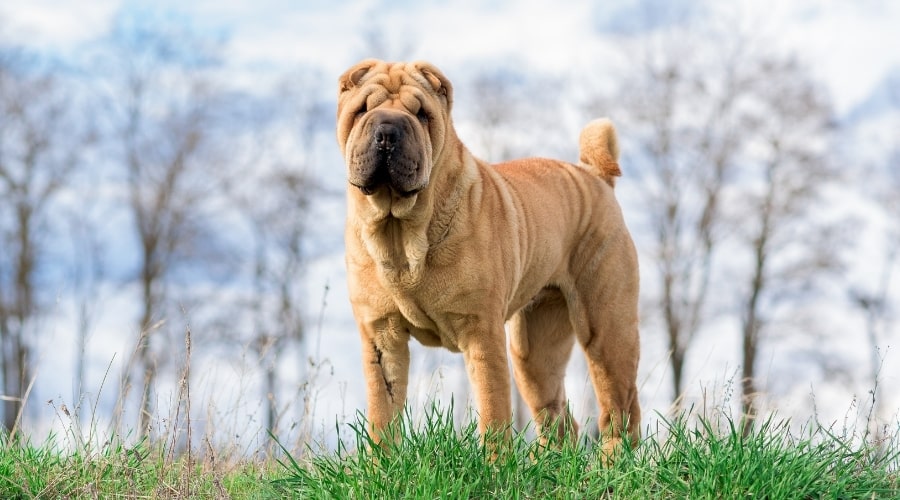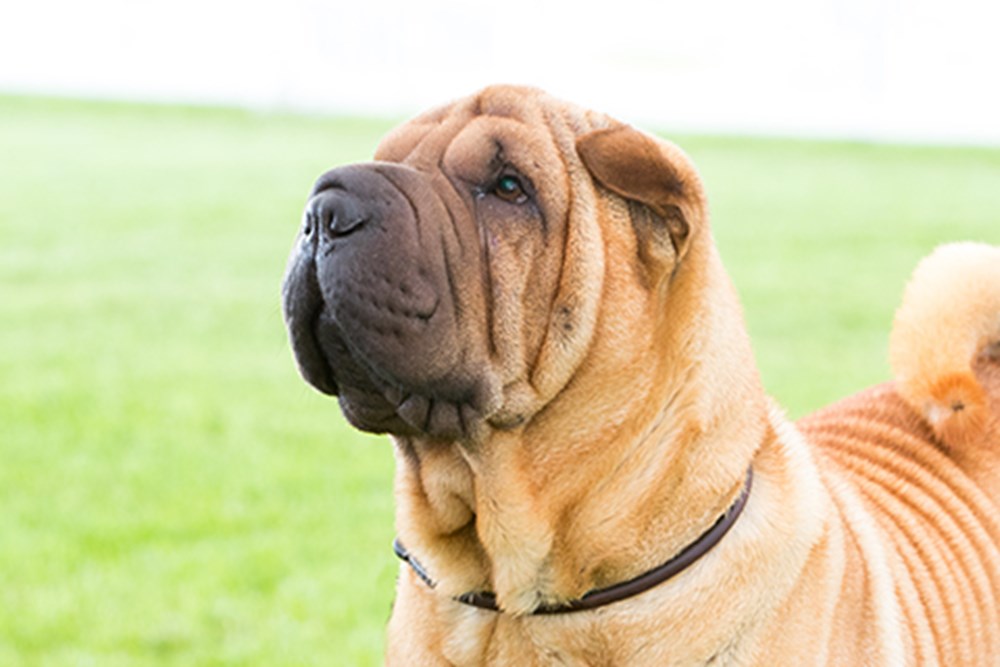The first information about dogs similar to modern Shar-Pei dates back to 206 BC. This is the beginning of the Han Dynasty in China. During the heyday of the Han Empire, Shar-Pei were very popular – figurines of dogs with a “hippo” muzzle are found in the tombs of those times. At that time, Shar-Pei carried mainly security service. There is an assumption that then they were much larger.
Later Shar-Pei became fighting dogs. In the town of Tai Li, near present-day Guangzhou, the peasants used the Shar-Pei’s ancestors to fight. Thick folded skin helped to escape from serious wounds, but these dogs lacked aggressiveness: only by seriously teasing the Shar-Pei, one could count on success in battle. The career of fighting dogs for Shar-Pei did not last long, fortunately.

The breed was also used to hunt a large animal – a wolf, a wild boar, large cats, and to protect livestock from predators.
In the 20th century, with the coming to power of Mao Zedong, Shar-Pei became unnecessary in China. They were considered attributes of bourgeois life and gradually found themselves on the verge of extinction. A few individuals remained on the island of Taiwan and in the province of Macau.
In 1966, the first Shar-Pei came to the United States through Hong Kong, where they aroused great interest among amateur dog breeders. In 1971 they were registered as Chinese fighting dogs. In the early 1970s, a whole campaign was launched to save the breed. Fanciers crossed them with similar dogs, resorted to inbreeding, selected the most successful individuals for breeding work. In 1976, the first official standard for Shar Pei dogs was registered in the United States.
Brief information about the breed
The name “shar pei” is translated from Chinese as “sand” or “sand skin”. This is due to the special coat of the dog – rough, prickly, similar to a horse, hard to the touch like sand.
Interestingly, the Shar Pei breed belongs to the four dog breeds from the so-called “first cluster”, from which all other breeds originated. This was proved by scientists who compared the Shar Pei genome with the wolf genome in a 2004 study.
In 2010, scientists also unraveled the mystery of the special folding of the sharpei skin. It is associated with a mutation in the HAS2 gene responsible for the synthesis of hyaluronic acid.
Shar Pei are medium-sized dogs, 44-51 centimeters at the withers, strong and powerful. Males are larger and more powerful than females. Shar Pei’s temperament is balanced, these dogs are very attached to their owner and, as a rule, are monogamous.
A feature of the breed is the folds of skin that cover the head and limbs of the Shar Pei, as well as the head, which is large in relation to the size of the body, similar to the head of a hippopotamus.
The blue-purple tongue of the Shar-Pei is another distinguishing feature. In nature, such a pigmented tongue is found in polar bears, giraffes and chow-chow dogs.
Shar pei puppies are born without folds, and by 6 weeks they form the first folds of the skin. Excessive folding is undesirable, a minimum of folds should be on the body and limbs. The tail is short, curved, wide at the base and tapering towards the tip. The coat is straight, short, hard.
All colors are allowed except white. The most common Shar Pei colors are red, fawn, brown, chocolate, and black. Spots, specks, brindle, tan marks are not allowed by the standard.
Character
Shar Pei character is proud and independent. Dogs of this breed are very attached to their family, in it they single out one owner, whom they obey more.

The Shar Pei is not aggressive towards other animals unless they attack first. Can get along with other animals if raised with them. But if you take another dog into the house later, you will have to face the manifestation of jealousy on the part of the sharpei. Sharpei do not touch “their” cats and treat them neutrally.
It is better not to leave small children with Shar Pei: as a rule, they do not get along. Sharpei avoids children and does not want to participate in their games. In addition, representatives of the breed, due to limited visibility, may be frightened of a sudden movement on the part of the child and make an attempt to bite him. Grown up children should be explained how to behave with a dog, what should not be done with a Shar-Pei. Shar-Pei can be a good companion for a teenager.
Sharpei is good for home protection: he is distrustful of strangers, a little closed.

